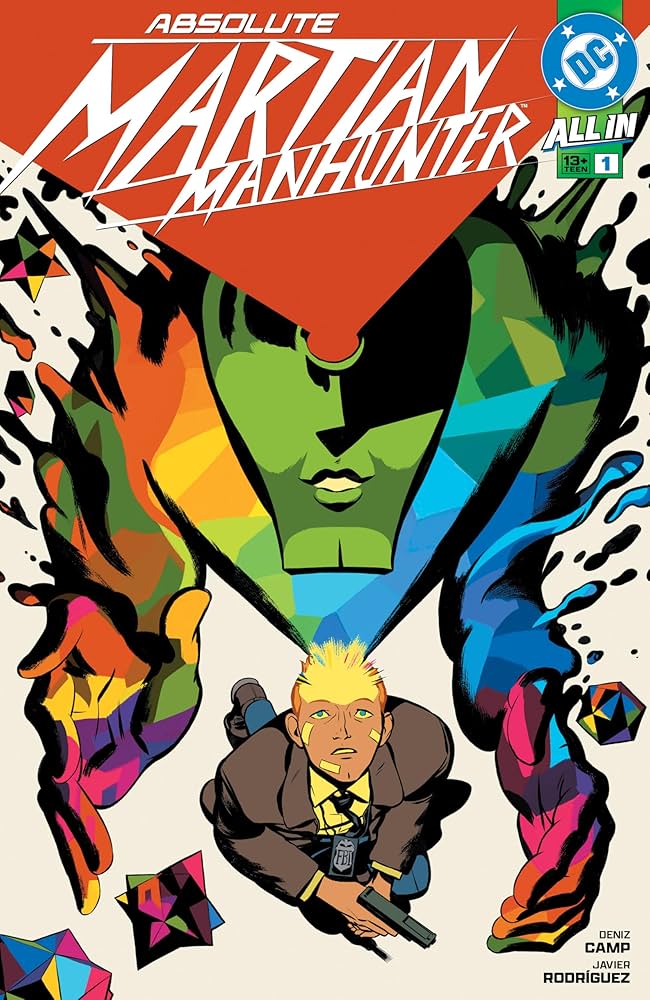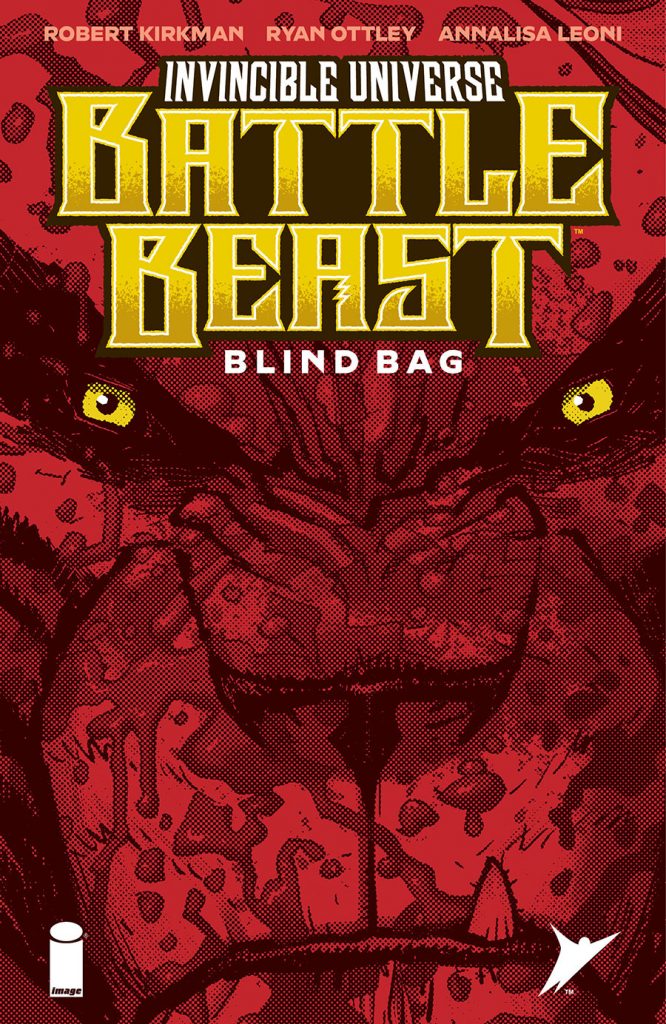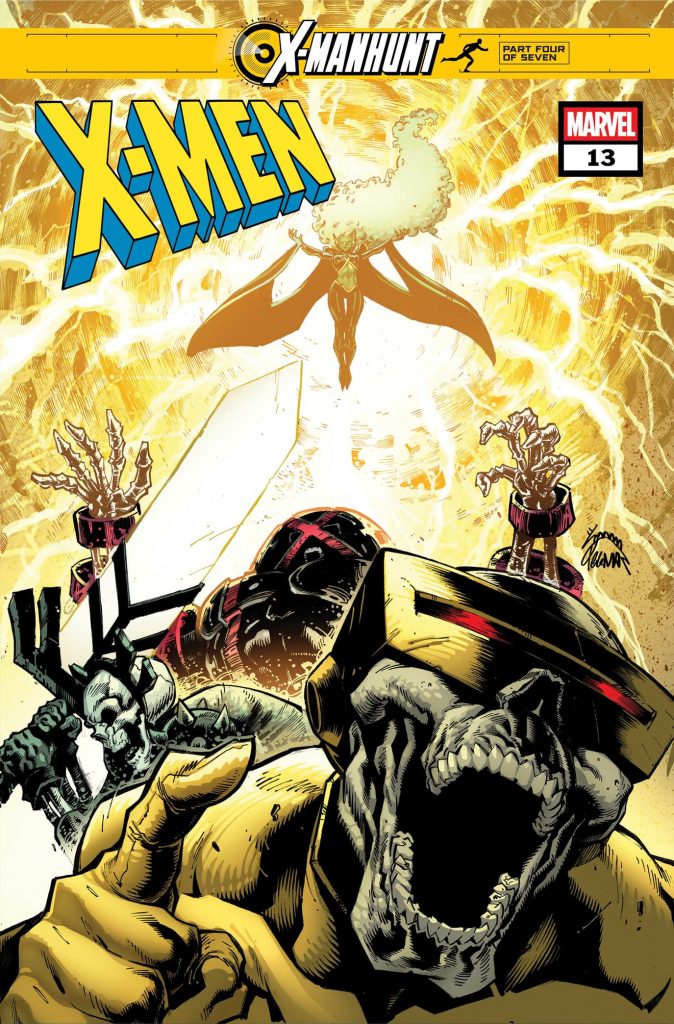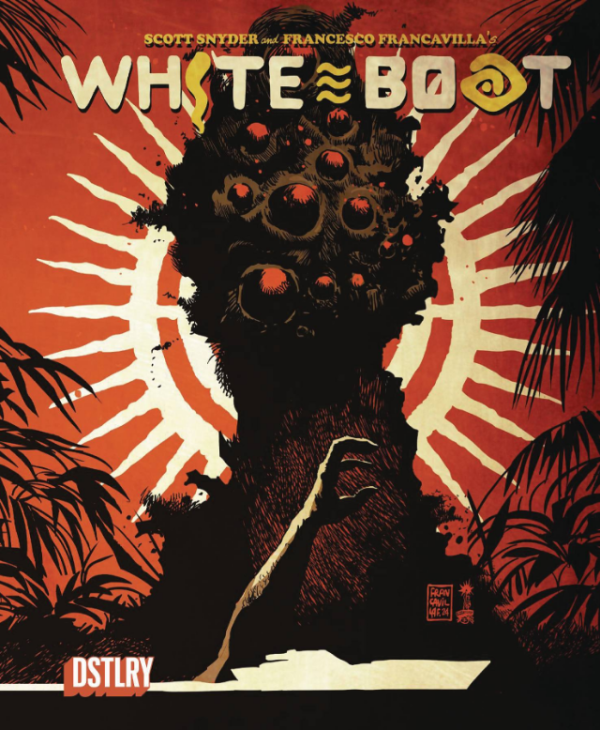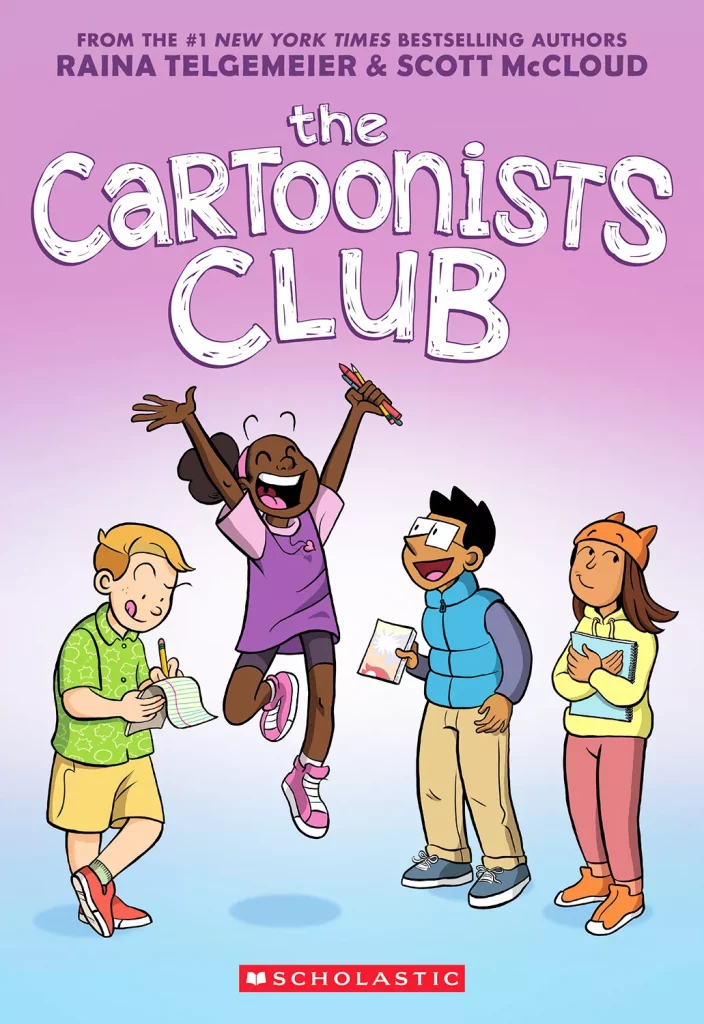As Everything in the Direct Market Changes, Comic Shops are Thriving
You’d be forgiven for thinking that everything is falling apart these days in the direct market, or the side of the comic industry comprised of comic shops.
When the conversation mainly orients on Diamond Comic Distributors’ bankruptcy, its varying after-effects, tariff fears, or the impacts those are having on publishers in the market, it can be easy to feel like that. And those feelings are only exacerbated by what has proven to be the standard operating procedure for the space. The comic industry seems to be hardwired towards always believing the worst. There are likely, and hopefully, very few industries more obsessed with its own potential demise. Fatalism is constantly greeted like an old friend by those within comics, something that’s as true today as it was 10, 20, or 30 years ago.
So, some may be worried that the end is coming. But if the results of my mid-year check-in with retailers prove anything, it’s that no one told comic shops and those who frequent them.
When asked about the year so far, retailers didn’t focus on doom and/or gloom. Instead, they described it as “record-setting” and “spectacular,” amongst a great many other superlatives. Those aren’t words most expect to hear about the direct market, especially when the focus is on the first half of the calendar year, a period often marked by glacial starts and unpredictable consumer behavior. But that’s what we’ve got after what’s proven to be a banner year so far for the shops featured today, 1 even if there still was a range of results amongst respondents.
Those gains didn’t come without surrounding pain, of course. The job of a comics retailer wasn’t easy to begin with, and it continues to grow in complexity 2 in the wake of Diamond’s bankruptcy. Complicating factors are still being uncovered as that bizarre saga (hopefully) nears its conclusion, with shops routinely having to reinvent what they do.
There may be challenges, as there always are. But it turns out that success is quite the remedy for the bad feelings those create, as we’ll cover in this check-in with shops at the halfway point of the year.
For those that are new to these parts, a typical version of this feature highlights a mix of shops that have seen gains year-over-year — which, in this case, is comparing the first half of 2025 to the first half of 2024 — and those that have seen losses. And when shops are up, they are usually only slightly so. Peak gains tend to be in the five to 10% range, with most growing by only a percent or two. There are anomalies, of course. But they’re exceptions, not the rule.
This year, the rule seemed to be that everyone was an exception.
Amongst those that reported year-over-year changes in sales, not a single shop was down. More than that, the store that brought up the rear wasn’t up slightly or a smidge or a bit. They were up 10%. That was Oakland’s Cape and Cowl Comics, whose owner Eitan Manhoff emphasized that “enthusiasm is high, customers are engaged, and the books are excellent!” That’s right. The shop that saw the smallest gain so far this year would have led most editions of this feature, and its team couldn’t be much happier about the results.
Cape and Cowl wasn’t far behind the overall pace, either. Most hovered around 15% up. Some went even higher, with Travis Pratt sharing that his two Current Comics locations were up a mighty 20 and 35%. That was nowhere near the top, though. This check-in’s leader delivered a number that was the single largest gain I’ve ever seen. Even with the caveats that this was only for the first quarter of the year 3 and that the shop had just moved to a new location last year, 4 it’s still mind-blowing that Jen King said her Shenandoah, Texas based store Space Cadets Collection Collection was up 53%. It even surprised her!
“I knew we were doing well, but I never dreamed of that kind of jump,” King said. “I’m not exaggerating when I say that we are having to order graphic novels now at a magnitude I never dreamed of before.”

Plus 10% to plus 53% is a pretty good range to be working from, but not all respondents shared a number this time. They didn’t seem to be hiding anything, though. Most were exuberant. Almost everyone described the year to date with some variation of “great.” Of course, the always enthusiastic Steve Anderson of Maryland and Virginia’s Third Eye Comics zigged while others zagged by describing 2025 as “awesome!” but results consistently exceeded expectations while doing so across most, if not all, product lines.
Business was so brisk that multiple stores reported record-setting results. John Hendrick said the first half for his shop, Dublin’s Big Bang Comics, were the “busiest six months” in the store’s history. While he didn’t go quite that far, Patrick Brower of Chicago’s Challengers Comics + Conversation said they saw “record high months” from four of the six so far. But even if everyone wasn’t setting records, they’re seeing exceptional results, and in a way they believe is more sustainable than the collector and speculator driven boom from the pandemic.
If you’ve been paying attention to the direct market conversation of late, you probably already know what led the way for shops. That’s because it’s been doing that for a while now.
“Not to keep repeating the same headlines of the last eight plus months, but DC’s Absolute books are far and away our biggest current draw,” Brower said. “All of them are selling exponentially higher than their DC Universe counterpart books.”
Absolute Mania is in full effect. But before you say anything, this isn’t a Batman only phenomenon. Everything Absolute is selling. In fact, everyone’s favorite barometer for the line’s success wasn’t even Batman. It was Martian Manhunter, a character who rarely has a title, and if he does, it never sells. Or, never sold until now, I should say.
“We have more subscribers to Absolute Martian Manhunter than we do for Hush 2 in Batman,” Manhoff said. “And Hush 2 is doing just fine.”
“Absolute Martian Manhunter is outselling X-Men almost three to one,” Aaron Trites from San Diego’s Now or Never Comics added.
The Absolute line is an explosive success, to the point that its biggest problem to date may be how challenging it is to order accurately. King shared that Space Cadets has increased orders for almost “every consecutive issue” of the line because word of mouth keeps spreading, which results in greater demand. Trites said he’s seen an increase in interest for second, third, and fourth printings, and the fierce demand for the Absolute books is driving that. He believes that’s a key to why the varying micro lines 5 continue to thrive.
“I’m sure it’s no coincidence, but that’s a part of the reason the Absolute, Energon, and Ultimate books sell so well,” Trites shared.
“People can still get them.”
Micro lines like Absolute DC, Ultimate Marvel, and Skybound’s Energon Universe are leading the way, with Brandon Schatz from Edmonton, Alberta’s Variant Edition Graphic Novels + Comics saying they are acting as a gateway for readers, with these “concise, curated lines really floating the rest of the industry’s output.” That’s a big deal, because several shops noted that interest in those lines has created increased sales in other, unaffiliated new releases.
That’s not to say that reign will last forever. Ryan Higgins runs a superhero-centric shop in Sunnyvale, California’s Comics Conspiracy, and he’s started to see slowdown on the non-headliner titles from Ultimate, Absolute, and Energon. It’s “nothing drastic,” but he believes “the ceiling has been hit” and “we’re hopefully at the floor” now. If this proves to be the floor, I suspect everyone would be happy with that as a result.
If there’s one creator whose name and work showed up the most in retailer feedback, it was someone who works on both the Absolute and Ultimate lines. That’s writer Deniz Camp. Everyone gushed about Absolute Martian Manhunter’s phenomenal sales, and Ultimates has proven to be one of the best-selling titles at Marvel. He’s more than just superheroes, though. Camp’s Image Comics series Assorted Crisis Events has popped alongside those tentpole titles, with shops raving about its sales. Schatz even said it’s Variant Edition’s most subscribed to title right now.
“There’s a special alchemy coming into play with (Camp’s) recent ideas that seems to be catching fire creatively,” Schatz said. “And thankfully, it all seems to be connecting with readers.”
If Camp is proof of anything, it’s that it isn’t just those micro lines that are hitting. Other books are connecting as well. Dan Wallace of Tulsa, Oklahoma’s Impulse Creations Comics & Collectibles called Invincible Universe: Battle Beast #1 “the biggest hit of the year so far,” with others touting how effective its blind bag proved to be. Not to be left behind, Battle Beast’s origin point in Invincible continues to deliver, with Jared Myland of Leeds’ OK Comics sharing that it “has become a bit of a phenomenon here,” as Invincible and Battle Beast have proven to be reciprocal successes.
“We’re reordering the new editions ten or twenty at a time,” Myland said. “We’ve given them a high-profile spot next to the front door in our steaming/TV/movies section. It’s brought in loads of new readers which, in turn, made Battle Beast #1 our best-selling comic of the year, selling three times what we sell of our usual best seller, Batman.”
Some titles and lines surprised, as both Brower and King noted that Godzilla had a big first half. Others didn’t, as Higgins and Myland shared that Jeph Loeb and Jim Lee’s return to Batman in H2SH has sold exceptionally well for them. 6 You might notice a connection here: We’ve talked about a whole lot of single issues so far. An oft repeated message was that especially since the Absolute line launch, single issue comic sales have surged, bringing in new, voracious readers at the same time.
It isn’t just single issues, of course. Third Eye tends to be a bellwether for the directions the direct market takes, and Anderson has seen a “big return in interest in trade paperbacks” this year. He wasn’t the only one that saw collected material pop. DC’s latest collections — its low cost, digest sized Compact Comics and phone book sized Finest editions — continue to deliver, with Hendrick saying he’s selling “tons and tons” of the former and Christina Merkler of Discount Comic Book Service (or DCBS) and In-Stock Trades (or IST) calling the latter “a very big seller.” Strangely, the other biggest hits amongst collections leaned in the other direction, with compendiums and premium hardcovers soaring. But collections excelling on each end of the pricing spectrum has been a growing trend in the past couple years.
Not to be left behind, all-ages graphic novels and manga have continued to shine. Old favorites like Dog Man and Amulet delivered for the former while a little bit of everything is connecting when it comes to the latter. Merkler said IST sees “no end” to the growth of manga, especially as they add more publishers to the mix, and Myland emphasized that it “continues to draw in new readers.” The tricky thing about manga, though, is it can be a challenge to keep up with everything. There’s just an enormous number of releases.
That’s why it pays to have staff members who are conversant in manga. That’s how The Guy She Was Interested in Wasn’t a Guy at All Vol. 1 became one of the top sellers of the year at Bellingham, Washington’s The Comics Place. Django Bohren, one of the shop’s owners, said a new staff member has worked “hard to sell boys’ love manga,” and their efforts are paying off.
The last success story of the year that earned multiple mentions were original and creator-owned single-issue titles. That’s another ascending space, per Anderson, as he believes “creator-owned is ramping up” right now. And it’s for good reason. There were a lot of titles that were hyped by retailers.
Beyond those previously noted, Exquisite Corpses led the pack, with others like Bug Wars, FML, We’re Taking Everyone Down with Us, The Seasons, and the broader Ghost Machine line also connecting at multiple shops. Daniel Warren Johnson’s works continue to deliver as well, with Johnson having so many fans at OK Comics that Myland and his team gave the cartoonist “his own designated ‘featured creator’ shelf,” something that led to even greater sales.
Both Schatz and Trites emphasized that some creator-owned titles offer a consistent quality and clear focus you don’t always find with licensed books, qualities that can make those titles an easier sell, as well as being better at keeping readers onboard going forward.
It’s not all good news on the original and creator-owned front. That side of comics earned almost as many negative mentions as it did positive ones. For all the hits there are, many titles from many publishers just aren’t connecting at all. And the ones that struggle typically don’t have the clear sense of purpose Schatz sees from the shining lights in that space.
“Despite all the turmoil lately, there are still companies that pump out creator-owned books that are just trying to run on their concept alone,” Schatz said. “Aftershock cratered, but Mad Cave picked up that slack for perfectly cromulent books that do nothing. I don’t say that to be mean. There is clear talent behind the line. But the line is filled with concepts, and not with purpose.
“This is where most books fail.”
And plenty are. Brower emphasized that these titles are “doing less” in Challengers these days, with new launches starting at a lower point than before and rarely rising above the level established at #1. And that’s even true of “established names,” with only Exquisite Corpses and Battle Beast being exceptions to that rule. Manhoff echoed that by saying, “There really aren’t a ton of big hit creator-owned books at the moment,” with most “struggling to stand out.”
This may connect to the idea that there are too many comics right now, something several retailers believe to be true. 7 It’s hard to attract attention in a vast and growing sea of releases. That’s why many creators and publishers are eagerly trying new — or even old — things to draw the eye of potential readers. But the jury is still out on how consistently effective those can be.
Arguably, or perhaps inarguably, the biggest contributor to the number of comics in the market right now is Marvel, the publisher that earned the most demerits from shops. At this point, it’s old news that Marvel is dragging. But it seems to only be getting worse, with the gap between the direct market’s #1 publisher in Marvel and its #2 one in DC tightening at multiple shops as the latter flourishes and the former flounders. And it isn’t any single thing the publisher’s doing that’s fueling this. It’s pretty much everything besides its Ultimate line.
“Books for flagship characters are just…there. There’s not a lot of excitement,” Trites said. “The rare exceptions are Jeff books and Marvel licensed crossovers, but our subscription numbers for most core Marvel titles are as low as they’ve ever been.”
“X-Men started well, but the number of titles starting over a short time scale was really overwhelming for a lot of our customers,” Myland added. “Many have just cut back to the core X-Titles.”
It’s clear that the direct market’s most notable publisher is a significant sore spot for retailers right now, as Marvel seems to have little going for it beyond the unbreakable habits of Marvel Zombies 8 and endless waves of titles and variant covers. And no one had a clear vision as to how they get out of it.
That said, if there’s one thing Marvel does have going for it, it’s consistent release schedules. Unfortunately, not everyone has those, and the publishers who struggle with delays have suffered because of that. DSTLRY led the way in that regard, with Trites saying Now or Never Comics’ initial success with the publisher has been wiped out as slipping schedules “have killed interest on some great books,” adding that “readers don’t trust the next issue will ever come out.” The idea seems to be that there are just too many comics that are coming out to give those that rarely do further chances. Readers just drop the title and move on.
The last thing that was repeatedly mentioned as a challenge wasn’t a comic at all. It was non-comic product lines shops carry. But even then, that came with a success story. Higgins said Comics Conspiracy got back into trading card games and non-sports cards this year, a move that proved to be right on time. Sales for the Final Fantasy set of Magic: The Gathering cards and Topps Chrome Marvel went “above and beyond even our wildest expectations.” It’s not enough for the shop to shift gears and start focusing on cards, but this channel has proven to be a valuable addition for Comics Conspiracy.
Everyone else that mentioned non-comic products, though, did so because they were a struggle. And much of that has less to do with consumer interest and more to do with industry and broader economic problems. Collectible card games have proven to be incredibly difficult to source, tariffs have ravaged toys and supplies, and Diamond’s bankruptcy has made purchasing action figures and other associated products a challenge, with that trio just being highlights from a laundry list of difficulties. Some have tried addressing it by loading up on supply to get ahead of the uncertainty. Others abandoned those product lines altogether.
There’s no right answer. But it’s clear the situation has resulted in shops rethinking their approach, as they analyze whether they’re making the right moves in the face of these challenges. Merkler said that DCBS and IST are doing everything they can “to make sure (we) are offering the most profitable mix of products.”
They’re almost assuredly not the only ones.
That last bit from Merkler was mostly in reference to the distribution environment, 9 which you may have been surprised to see as mostly a footnote in the section about the challenges the direct market has faced this year.
That was for two main reasons. One is because it deserves its own section due to how complicated it’s proven to be. So, let’s quickly address what happened in the most abbreviated way possible. Diamond Comic Distributors, or DCD, filed for bankruptcy in January before its varying parts were eventually sold to joint bidders in Universal Distribution and Ad Populum. The latter acquired DCD, and since then, they’ve made all the wrong moves. They laid off key staff, stopped paying publishers, and now appear to be trying to sell all remaining inventory while hoarding the revenue to itself. It’s nasty work, and it’s resulted in publishers frantically moving to either Lunar Distribution or Penguin Random House (PRH), if they had the opportunity to move at all.
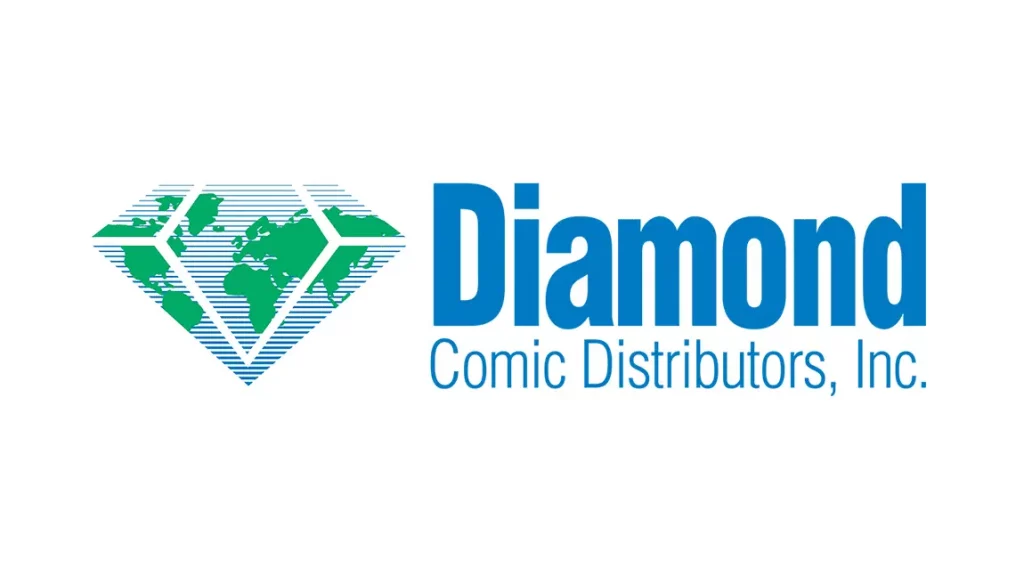
The other main reason is that the pain for comic shops has proven to be surprisingly limited. Most retailers featured here had largely moved away from Diamond already due to its poor performance and staggering shipping costs, a decision made easier by the biggest publishers migrating to other distributors long before the bankruptcy.
It was still a transition, though, one that came with significant heartache for some. Merkler said DCBS and IST have been ordering “through Diamond for the last 26 years and will not from today forward,” 10 and it’s impossible for that to not come with some level of anguish. But as Bohren shared, it’s mostly just a “hassle at this point,” one that seems to be coming to a close from a retailer perspective.
“With Dynamite leaving and this huge retailer movement to stop ordering from Diamond altogether, I think we’re finally at the end of their phase out,” Bohren shared.
Some have had more problems than others, but most were delighted by how painless it proved to be. 11 Anderson said he’s “very optimistic about the distribution space,” sharing he’s felt “no impact” from Diamond’s disastrous turn. Manhoff described the costs for Cape and Cowl Comics as being “pretty small.” Higgins called Diamond “a non-factor.” Pratt noted it might actually be “easier” to have one fewer distributor to order from. Wallace even went as far to say that these changes have “provided far more benefits than challenges.” If you predicted these retailer takes when Diamond first announced its bankruptcy, you might have been laughed out of the room.
And yet here we are.
Most are fine with the current mix of Lunar and PRH on the single-issue side and assorted others like Hachette, Simon & Schuster, and MacMillan on the collections and graphic novels one. There are still kinks to be worked out, of course. Bohren has concerns about how well Lunar will manage increased volume and how others will handle metadata. Others are keeping an eye on the potential impact of new players like Universal Distribution and Alliance Games. But as Higgins said, what they’re currently facing is “a far cry from the worst of Diamond’s problems.”
The biggest issues connected to Diamond’s perilous 2025 and distribution as a whole tend to orient around a few key things. One is the amount of work that goes into the job in this new multi-distributor environment. That’s something Myland has been contending with, even if he’s used to working with the “absolutely fantastic” Diamond UK, which continues to operate as a separate company from Diamond Comic Distributors in the current state.
Myland said the distro has managed to build “pretty much a full roster of publishers” outside of its previous connections with Diamond US. It’s still incomplete, though, and when you combine shifts in how ordering through Diamond UK works with the need to purchase material it doesn’t carry from varying publishers or distributors, OK Comics now has more work on its hands. But even then, there are plusses with those minuses.
“From a workload point of view, I wish we could go back to getting everything from one place,” Myland said. “But from a financial point of view, it’s great that we have more options, and that suppliers are kept on their toes by having more competition.”
Another challenge the Diamond situation has created is the “chaos” of knowing what you’re getting and where it’s coming from, per Schatz. He’s found himself ending up with “a few double orders” because of that, while Hendrick emphasized that the speed round of musical chairs everyone went through has resulted in “Wait, where did I order that book from?” being a frequently asked question this year.
Brower saw an even more unexpected problem. Challengers previously ordered all-ages graphic novels through Diamond, and it took the shop several months to realize that they simply stopped receiving anything from Scholastic Graphix, with the absence of Raina Telgemeier and Scott McCloud’s The Cartoonists Club finally making them aware of what was happening.
“It was an unexpected amount of extra work just to figure out what we were missing from products that had already been released, just not via Diamond” Brower said.
That’s been a common tale as publishers furiously adapt in hopes of working with distributors that, as Schatz put it, “actually pay them.” Sometimes that means Diamond orders are canceled at the last second with new ones being necessary the same night through another distributor. Other times that can mean the loss of access to small publishers, with shops having to find new solutions on the fly. As everyone adjusts, things slip through the cracks, which requires further adjustment. They’re making it work, but it can be difficult.
If anyone has struggled with the transition, though, it’s Now or Never Comics. Trites said that they had “transitioned as many orders as possible to Lunar and PRH early on,” but Diamond’s bankruptcy has still “had a notable negative impact on our shop.” That’s for one main reason, and it’s a crucial distinction between them and other featured shops. Now or Never leveraged Diamond products like its point-of-sale system ComicSuite, its pull-list management software Pullbox, and varying sales report tools to run its business.
“Even with 95% of our weekly orders rolled away from Diamond the company is just so engrained in so many of our day-to-day operations,” Trites said.
Despite all the stress that’s come with having to frantically migrate away from those tools as Diamond unexpectedly sunsetted them, Trites is optimistic about the future.
“I think it’s necessary and comics will be better for it in the long run. Diamond’s shortcomings and failures of service led to Lunar and PRH, and by nearly every metric those distributors meet our needs better than Diamond ever did,” Trites said. “Competition at the distributor level has yielded better service for shops, and therefore customers, for the first time in 25+ years.
“While I worry that the new Diamond won’t be able to do more than pull the copper out of the walls to sell for scrap, I do think there will be a point when I’ll be able to look back and say, ‘Thank goodness we’re not doing it that way anymore.’”
There’s an idea that comic fans are a little more tuned into the business side of the industry than enthusiasts of other storytelling mediums. After all, prose readers aren’t contemplating the changes being made on the distribution side of bookstores, as just one example. But retailers pretty much universally said that customers haven’t been too worried about what’s happening with Diamond, if they were even aware of it. As Higgins put it, while “the people behind the scenes know and worry too much about this stuff, regular customers really don’t pay attention or care.”
That’s likely made easier by the fact that customers just seem to be jazzed about comics right now. Retailers reported that the conversation is lively, excitement is there, and as Brower put it, “if we’re charting how customers are feeling based on money being spent, I’d say Challengers’ customers are feeling pretty satisfied with the current state of comics.” On the heels of a somnambulant stretch after the pandemic boom, comic shop customers are awake once again. Or, as King put it, “The love of comics and graphic novels is alive!”
Even better, that love is creating action. Trites said Now or Never Comics is at “a record high number of subscribers” and “just had to install more cubbies to make room for the growing number of pull lists” that have come from a 25% gain in foot traffic year-over-year. It would be one thing if shops were just seeing an increase in gift purchases or one-and-done visits. But multiple stores reported that new customers are setting up for the long haul, as gateway comics have led to weekly purchases.
Again, that’s not to say things couldn’t be better. The economic and societal environment plays a part in that. Money is tight for some and concerns about the world can make joy a mysterious concept. 12 The Great Distribution Saga is unfortunately still incomplete, and Marvel in particular needs to get it together. More than that, smaller publishers are facing significant challenges and the data retailers rely on is likely to only get messier from here, as Bohren noted. But he still believes “the industry at large is headed in a good direction.”
He’s not alone in feeling that way.
That’s because high sales and happy customers do a heck of a job of curing what ails retailers. Truth be told, this check-in with shops was about as joyous as any I can remember. Several retailers emphasized just how much they love what they do, completely unprompted. And they aren’t just happy because they’re making sales; they’re thrilled about the state of comics. Shops regularly pointed out just how good the medium is right now, with Brower believing that “the best comics ever published are being published today,” at least in terms of volume.
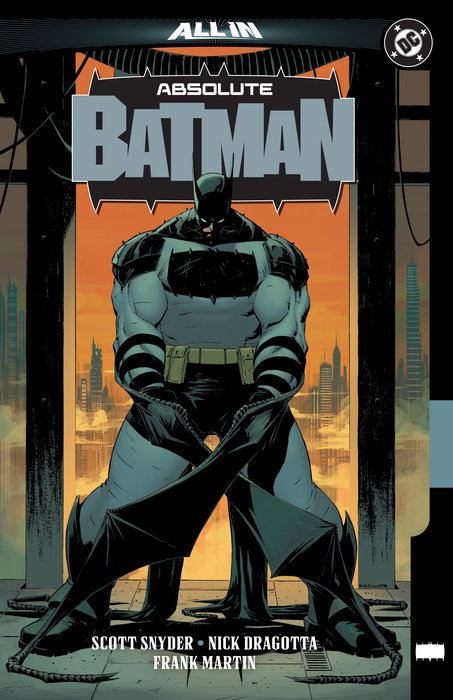
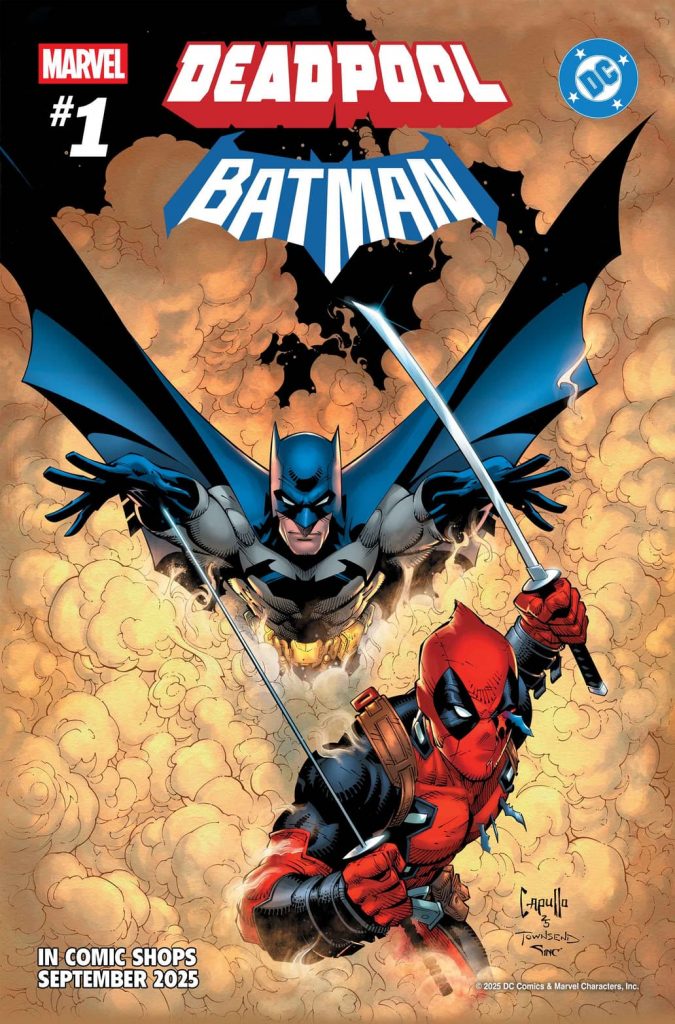
That might be why customers are so enthusiastic right now. As Anderson has been emphasizing for a while now, the direct market has seemingly shifted from collector-driven comics to content-fueled ones, and that’s created more excited readers and more sustainable sellers. And with major releases on the horizon like the collections of DC’s Absolute line and the first DC/Marvel crossover in 20+ years, the belief amongst retailers is that the second half of the year could be even better than the first. 13
In the open, I talked about how people often expect the worst for the direct market and the single-issue comic form. The signs seem to say, “the end is nigh,” and everyone is just biding time along the way. I’ve always been a skeptic about that idea, if only because the direct market is a cyclical space, with highs following lows and vice versa. But it felt like some were truly beginning to believe the hype during the downturn that followed the pandemic boom. Everyone was operating in “survival mode,” as Manhoff put it. Pair all that with Diamond’s rapid downfall, and suddenly, you wouldn’t be blamed for thinking that maybe the end was nigh, after all.
Maybe that’s why retailer answers almost felt cathartic when they shared their thoughts about where comics retail is right now and going forward. Wallace described being “able to work with and sell what I love” as “a privilege.” Anderson said he feels “massive gratitude that I get to wake up every single day and say I have the best job in the world.” Merkler labeled retailers as “tenacious and passionate,” which is why she’s “always optimistic about the future of comics.” No matter what they’re contending with, comic shops always seem to find a way.
And that resiliency is paying off right now.
Perhaps no one expressed that better than Myland. The UK-based retailer has a rosy outlook on the future, as he knows just how great comics and graphic novels are right now, and how exceptional what’s coming down the path might be. And sure, sometimes there are dips and lulls, with weeks where readers might not find something for them. But that’s no reason to lose hope.
“The best thing about comics,” Myland said, “is there will always be another wave of new releases next week.”
If you enjoyed this feature, consider subscribing to SKTCHD for more longforms, columns, and interviews like it. SKTCHD is entirely subscription funded, with subscriptions starting as low as $2.99 a month to read and support ad-free, independent comics journalism.
Header image is from Cape and Cowl Comics in Oakland, California.
As per usual, I must note that this is just a small sample of comic shops from around the world. It isn’t meant to represent every shop, just the ones featured today.↩
As well as resulting bills for TUMS.↩
Which, I should note, is usually far and away the worst one.↩
Which might have led to a slower than usual start to 2024.↩
A term I use to describe small, cohesive lines of comics within a publisher.↩
Although Trites did reveal that his sales for H2SH have tailed off quickly.↩
It was such a notable topic that I asked shops specifically about it, and when I received answers back, I ended up splitting the results into a second piece that will arrive tomorrow. It clearly deserved its own space.↩
The hardcore fans of the publisher, not the zombie versions of the characters made famous by Robert Kirkman and Sean Phillips.↩
Which, it must be noted, she is a part of as the head of Lunar Distribution, one of the two largest remaining single-issue comic distributors in the direct market.↩
They’ve cut off all orders as of July 1.↩
At least for them. Many emphasized how frustrated they were for Diamond’s employees and the publishers and creators that have been punished by the distributor’s terrible actions.↩
Higgins did note that “retail therapy” tends to result in times like these being great ones for comics, even if he hates that that’s a thing.↩
That might especially be the case for Big Bang Comics, as Hendrick shared the shop is in the process of moving into “a new, 8,000 square foot, two story superstore.” That’s huge, both in terms of literal size and the future of the store.↩

